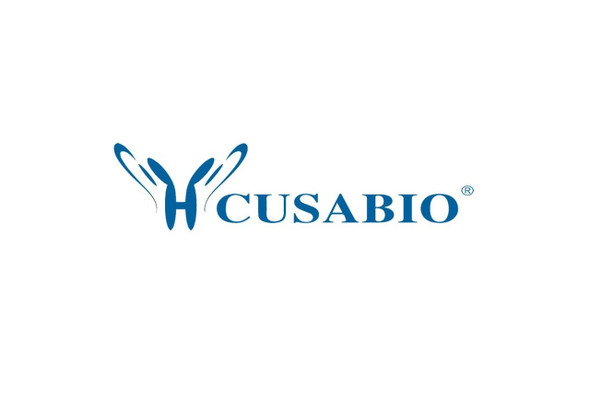Cusabio Human Recombinants
Recombinant Human Tumor necrosis factor receptor superfamily member 1A (TNFRSF1A), partial | CSB-RP072244h
- SKU:
- CSB-RP072244h
- Availability:
- 3 - 7 Working Days
Description
Recombinant Human Tumor necrosis factor receptor superfamily member 1A (TNFRSF1A), partial | CSB-RP072244h | Cusabio
Alternative Name(s): Tumor necrosis factor receptor 1 ;TNF-R1Tumor necrosis factor receptor type I ;TNF-RI ;TNFR-Ip55p60; CD120a
Gene Names: TNFRSF1A
Research Areas: Apoptosis
Organism: Homo sapiens (Human)
AA Sequence: VPHLGDREKRDSVCPQGKYIHPQNNSICCTKCHKGTYLYNDCPGPGQDTDCRECESGSFTASENHLRHCLSCSKCRKEMGQVEISSCTVDRDTVCGCRKNQYRHYWSENLFQCFNCSLCLNGTVHLSCQEKQNTVCTCHAGFFLRENECVSCSNCKKSLECTKLCLPQIENVKGTEDSGT
Source: E.coli
Tag Info: N-terminal GST-tagged
Expression Region: 31-210aa
Sequence Info: Partial
MW: 47.2 kDa
Purity: Greater than 90% as determined by SDS-PAGE.
Relevance: Receptor for TNFSF2/TNF-alpha and homotrimeric TNFSF1/lymphotoxin-alpha. The adapter molecule FADD recruits caspase-8 to the activated receptor. The resulting death-inducing signaling complex (DISC) performs caspase-8 proteolytic activation which initiates the subsequent cascade of caspases (aspartate-specific cysteine proteases) mediating apoptosis. Contributes to the induction of non-cytocidal TNF effects including anti-viral state and activation of the acid sphingomyelinase.
Reference: Discovery of novel human transcript variants by analysis of intronic single-block EST with polyadenylation site.Wang P., Yu P., Gao P., Shi T., Ma D.BMC Genomics 10:518-518(2009)
Storage: The shelf life is related to many factors, storage state, buffer ingredients, storage temperature and the stability of the protein itself. Generally, the shelf life of liquid form is 6 months at -20?/-80?. The shelf life of lyophilized form is 12 months at -20?/-80?.
Notes: Repeated freezing and thawing is not recommended. Store working aliquots at 4? for up to one week.
Function: Receptor for TNFSF2/TNF-alpha and homotrimeric TNFSF1/lymphotoxin-alpha. The adapter molecule FADD recruits caspase-8 to the activated receptor. The resulting death-inducing signaling complex (DISC) performs caspase-8 proteolytic activation which initiates the subsequent cascade of caspases (aspartate-specific cysteine proteases) mediating apoptosis. Contributes to the induction of non-cytocidal TNF effects including anti-viral state and activation of the acid sphingomyelinase.
Involvement in disease: Familial hibernian fever (FHF); Multiple sclerosis 5 (MS5)
Subcellular Location: Cell membrane, Single-pass type I membrane protein, Golgi apparatus membrane, Single-pass type I membrane protein, Secreted, Note=A secreted form is produced through proteolytic processing, SUBCELLULAR LOCATION: Isoform 4: Secreted
Protein Families:
Tissue Specificity:
Paythway: MAPKsignalingpathway
Form: Liquid or Lyophilized powder
Buffer: If the delivery form is liquid, the default storage buffer is Tris/PBS-based buffer, 5%-50% glycerol. If the delivery form is lyophilized powder, the buffer before lyophilization is Tris/PBS-based buffer, 6% Trehalose, pH 8.0.
Reconstitution: We recommend that this vial be briefly centrifuged prior to opening to bring the contents to the bottom. Please reconstitute protein in deionized sterile water to a concentration of 0.1-1.0 mg/mL.We recommend to add 5-50% of glycerol (final concentration) and aliquot for long-term storage at -20?/-80?. Our default final concentration of glycerol is 50%. Customers could use it as reference.
Uniprot ID: P19438
HGNC Database Link: HGNC
UniGene Database Link: UniGene
KEGG Database Link: KEGG
STRING Database Link: STRING
OMIM Database Link: OMIM










